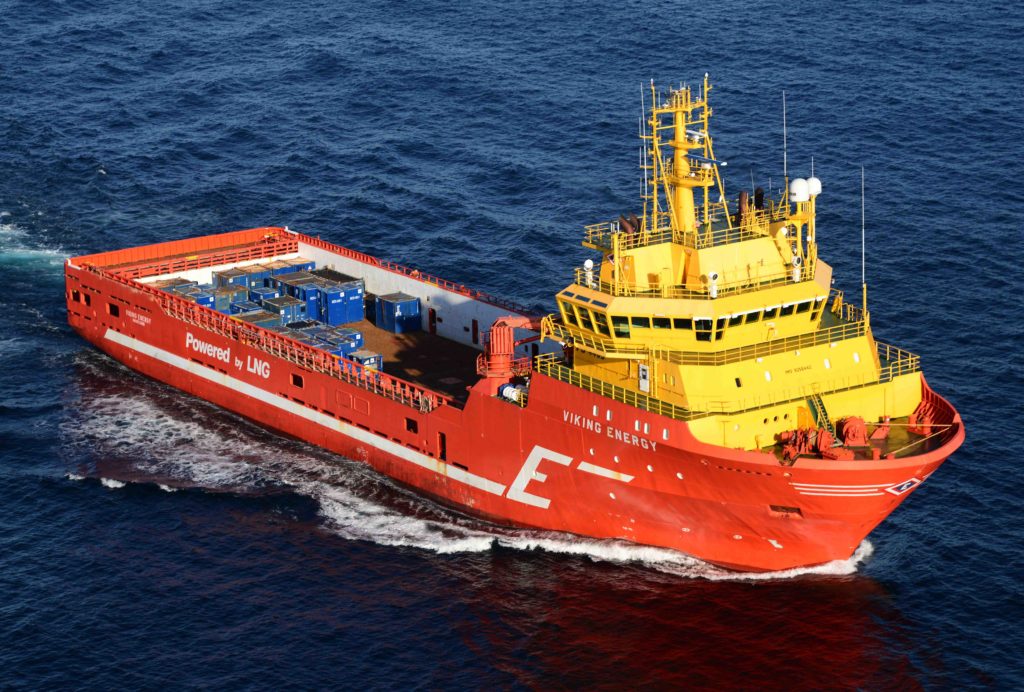The ShipFC project will demonstrate that long-range zero-emission voyages with high power on larger ships is possible
The project will see an offshore vessel, Viking Energy, which is owned and operated by Eidesvik and on contract to energy major Equinor, have a large 2MW ammonia fuel cell retrofitted, allowing it to sail solely on the clean fuel for up to 3,000 hours annually. The ammonia used in the energy system will be produced by electrolysis. Ammonia is an abundant energy source and can easily be made from renewable resources making it one of the fuels that will likely meet part of shipping’s future energy demand.
The goal of the project is also to ensure that a large fuel cell can deliver total electric power to shipboards systems safely and effectively. A significant part of the project will be the scale up of a 100-kilowatt fuel cell to 2 megawatts.
Another part of the ShipFC project will perform studies on three other vessel types, namely offshore construction vessels and two cargo vessel types, to illustrate the ability to transfer this technology to other segments of the shipping industry.

Ammonia fuel cells in shipping
For the last couple of years, there has been a lot of interest in ammonia fuel cells w
ithin the maritime sector. However, no shipowner or operator has committed to investments in large-ship systems until now.
The key to project impact is the demonstration of a high-power ammonia fuel cell onboard Eidesvik PSV “Viking Energy”. The vessel will be put into commercial operation for energy major Equinor. The demonstrator will prove that the ammonia fuel cell technology works at scale and suggest how surrounding innovation barriers such as missing fuelling infrastructure can be solved.
The project will increase its impact by taking the core example developed in the demonstrator and transfer experiences to a much larger audience. This will be done through the replication phase, where we both do a socio-technical analysis and feasibility studies on three additional vessel types to bring relevance to a broad set of use cases and explore the path to large 20+MW systems.
Green ammonia
For the demonstrator vessel green ammonia will be used as fuel. The project will use ammonia from YARA’s pilot plant for certified green ammonia production. By demonstrating the delivery of green ammonia as a maritime fuel the project will support further increase in green ammonia production capacity in the years to come, which will in turn lower costs and thus strengthen the position for ammonia as one of the preferred future zero emission fuels for the maritime industry.
Ammonia is already transported on a large scale, and it is supported by most chemical tankers. Through the project we aim to address existing challenges, such as incentivising green ammonia production through a certification scheme and developing solutions for maritime bunkering.
The project will also develop market and business models for green ammonia. This work includes quantifying the potential for cost reductions as the Fuel Cell and alternative fuel technologies matures and cooperation with linked activities.
The replicators
The ShipFC project will perform studies on three other vessel types and operational profiles, including 20+MW systems, to illustrate the ability to transfer the technology to other segments of the shipping industry. The replicators include a bunker vessel, a cargo vessel, as well as a full-scale installation on North Sea Shipping construction vessel “North Sea Giant”. Included is also cost analysis activities and development of viable business models for further commercialisation and market entry for large scale fuel cell power systems for maritime use, including the build-up of a robust infrastructure and value chain for zero-emission fuels.
